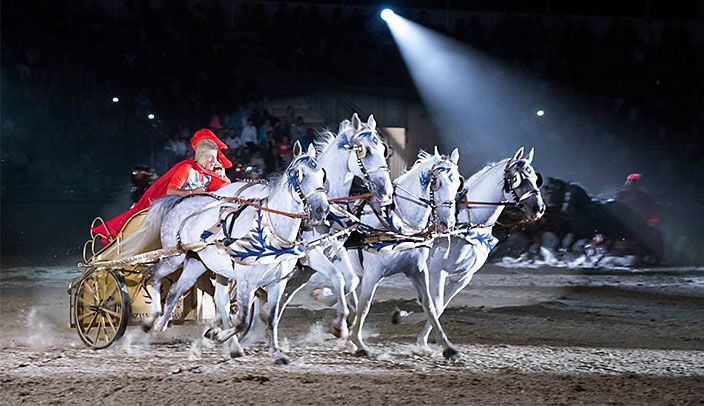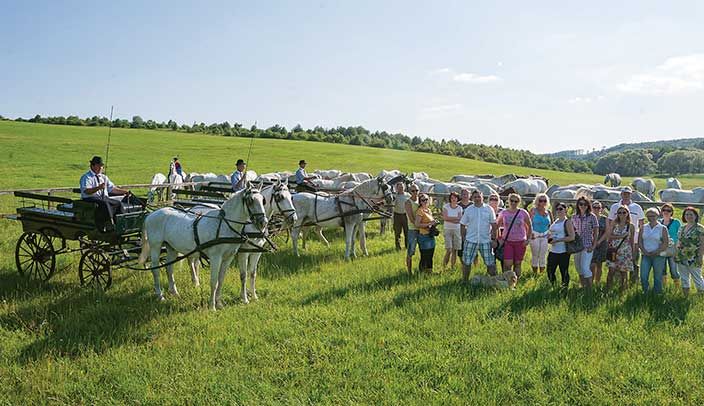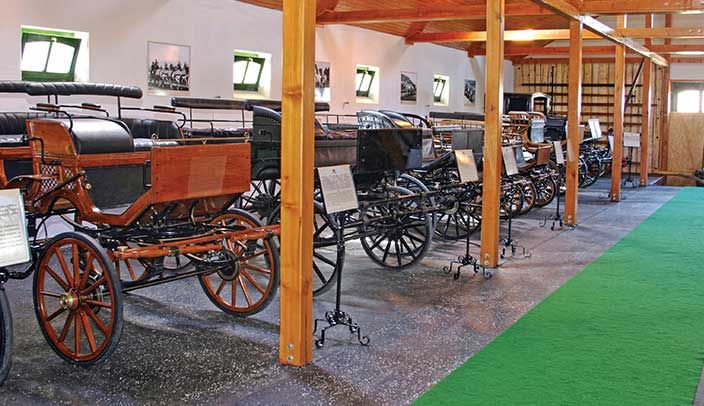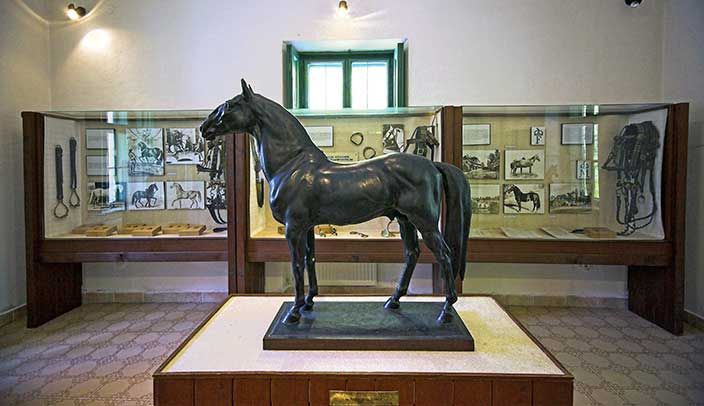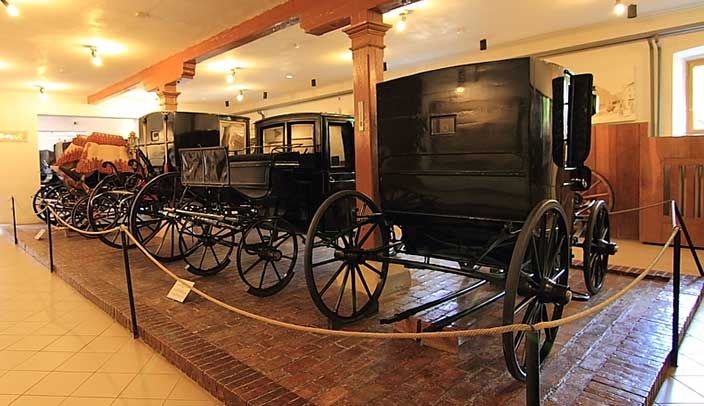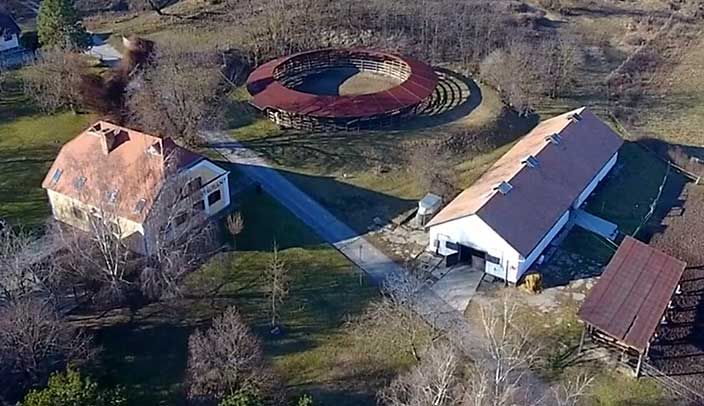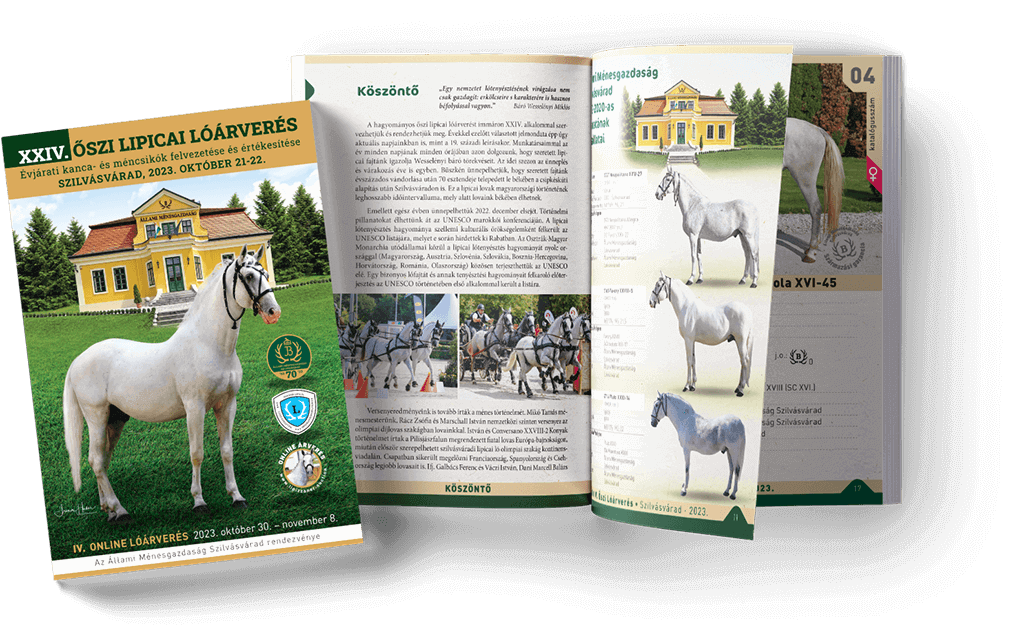Carriage museum

 We say that our ancestors were bred for horses, but our results in modern equestrian sports seem to prove that the Hungarian was born for driving. During their migration, the Hungarians were followed by oxen and horse-drawn carts and talligas, the chronicles of the time wrote about this, but the centuries-old, millennia-long migratory route before the age of the chronicles traveled in the area of the development of prehistoric vehicles, and then the Hungarians who settled in the Carpathian Basin brought this tool with them from the east. , perfected the chariot, which also differed from the vehicles of the surrounding cultures due to its specific structure.
We say that our ancestors were bred for horses, but our results in modern equestrian sports seem to prove that the Hungarian was born for driving. During their migration, the Hungarians were followed by oxen and horse-drawn carts and talligas, the chronicles of the time wrote about this, but the centuries-old, millennia-long migratory route before the age of the chronicles traveled in the area of the development of prehistoric vehicles, and then the Hungarians who settled in the Carpathian Basin brought this tool with them from the east. , perfected the chariot, which also differed from the vehicles of the surrounding cultures due to its specific structure.
 The lighter, more decorative carriage used for passenger transport evolved from the cart. In the 16th century domestic and foreign written sources, this vehicle is mentioned more than once - it is assumed that it got its name from the village of Kocs in Komárom County - which then conquered the whole of Europe, and its name is in almost every language - the German Kutsche, the English coach , the French coche, the Italian cochio – refers to the Hungarian namesake.
The lighter, more decorative carriage used for passenger transport evolved from the cart. In the 16th century domestic and foreign written sources, this vehicle is mentioned more than once - it is assumed that it got its name from the village of Kocs in Komárom County - which then conquered the whole of Europe, and its name is in almost every language - the German Kutsche, the English coach , the French coche, the Italian cochio – refers to the Hungarian namesake.
The 17-18. in the 19th century, more and more gentlemen preferred to get into the more comfortable car when going on a long journey, and driving soon became a real national sport, which is perhaps most beautifully described in the memoirs of Frigyes Podmaniczky, the former mayor of Budapest, the 19th century gallant. It is worth recalling:
"At that time, we traveled bravely through one country at a time with the help of a couple of horses tied to the front of our carriage. ... Under the given conditions, traveling on our own horses naturally resulted in the art of horse driving developing into a real sport, which had to be conscientiously practiced by those who did not want to expose themselves to the unpleasant chance of falling asleep on the highway after a few miles of senseless driving, go jogging to the nearest village...
Traveling on your own horses could only be done with satisfactory results if all the parts of our carriages were properly assembled, cared for and handled: ..."
All of our knights cited for this also found a cart: "At the beginning of the fifties, I discovered a carriage structure that could be used purposefully in light, sandy soil and on bad roads, which became popular throughout the country, later even abroad, under the name "Azod cart". …”
This was the car - and the one from Cseklész next to it - from which the Hungarian carriages known all over Europe - the Móri, the Csurgói, the Károlyi, the Esterházy, the Cziráky - were formed.
Carriages, along with the driving, and last but not least the Hungarian horse harnesses, i.e. the Hungarian two or a four-in hand are a part and builder of the European equestrian culture, - such as the classic Viennese Spanish Riding School, French dressage that reflects easy elegance, the Italian jumping style that creates the momentum of flying.
 Lipizzaner horses and Szilvásvárad drivers played a significant role in the international success of Hungarian driving. That is why the carriage museum next to the stud farm has a worthy place, which presents the traditions of Hungarian driving culture and the memories of Szilvásvárad.
Lipizzaner horses and Szilvásvárad drivers played a significant role in the international success of Hungarian driving. That is why the carriage museum next to the stud farm has a worthy place, which presents the traditions of Hungarian driving culture and the memories of Szilvásvárad.
A huge exhibition is needed to give a complete picture of the carts and wagons. No exhibition space can undertake this. Where this is possible, they put together their presentation from the available material. We did the same, briefly reviving the past, the centuries-old past, the roots, and then, in addition to some cars that are actually only kept in museums today, we present Hungarian carriages that were used in major international competitions in the most recent era, in the age of sports. We have not forgotten the carts of our predecessor's former state economy, now out of use, which were used for the daily work of agriculture and the transportation of products.
 Classic Hungarian carriagefs were initially used in carriage driving competitions. With the increase in sports requirements, these cars no longer hold their place with their traditional dimensions. However, our carriage manufacturers, while preserving the style and lines of the carriages, made them wider and shorter than traditional ones that met the competition requirements, not to mention the marathon driving competition, for which a special vehicle, the so-called they built a marathon carriage. It is also worth recalling its history: in 1978, at the four-in hand driving world championship in Kecskemét, one of the drivers of the English team was helicopter manufacturer Alan Bristow. He was saddened by the fact that the style carriages built for good roads broke and overturned in the field. Returning home to England, he and his design engineers built a special, impact-resistant, deep-built, so-called had a carriage designed for marathon driving. Since then, marathon carriages have gone through a development rivaling that of carriages and the most modern technical solutions make the drivers' work easier.
Classic Hungarian carriagefs were initially used in carriage driving competitions. With the increase in sports requirements, these cars no longer hold their place with their traditional dimensions. However, our carriage manufacturers, while preserving the style and lines of the carriages, made them wider and shorter than traditional ones that met the competition requirements, not to mention the marathon driving competition, for which a special vehicle, the so-called they built a marathon carriage. It is also worth recalling its history: in 1978, at the four-in hand driving world championship in Kecskemét, one of the drivers of the English team was helicopter manufacturer Alan Bristow. He was saddened by the fact that the style carriages built for good roads broke and overturned in the field. Returning home to England, he and his design engineers built a special, impact-resistant, deep-built, so-called had a carriage designed for marathon driving. Since then, marathon carriages have gone through a development rivaling that of carriages and the most modern technical solutions make the drivers' work easier.
The carriage exhibition offers a glimpse into these events, which we heartily recommend to our dear guests.
Adress
Szilvásvárad, Fenyves u. 4.
Opening hours
9 a.m. to 12 p.m. and 1 p.m. to 4 p.m. (variable days off)
Inquire about the current opening hours at the following phone number: 06 36 564 400
Prices are gross prices. We reserve the right to change the prices published on the pages of menesgazdasag.hu!


